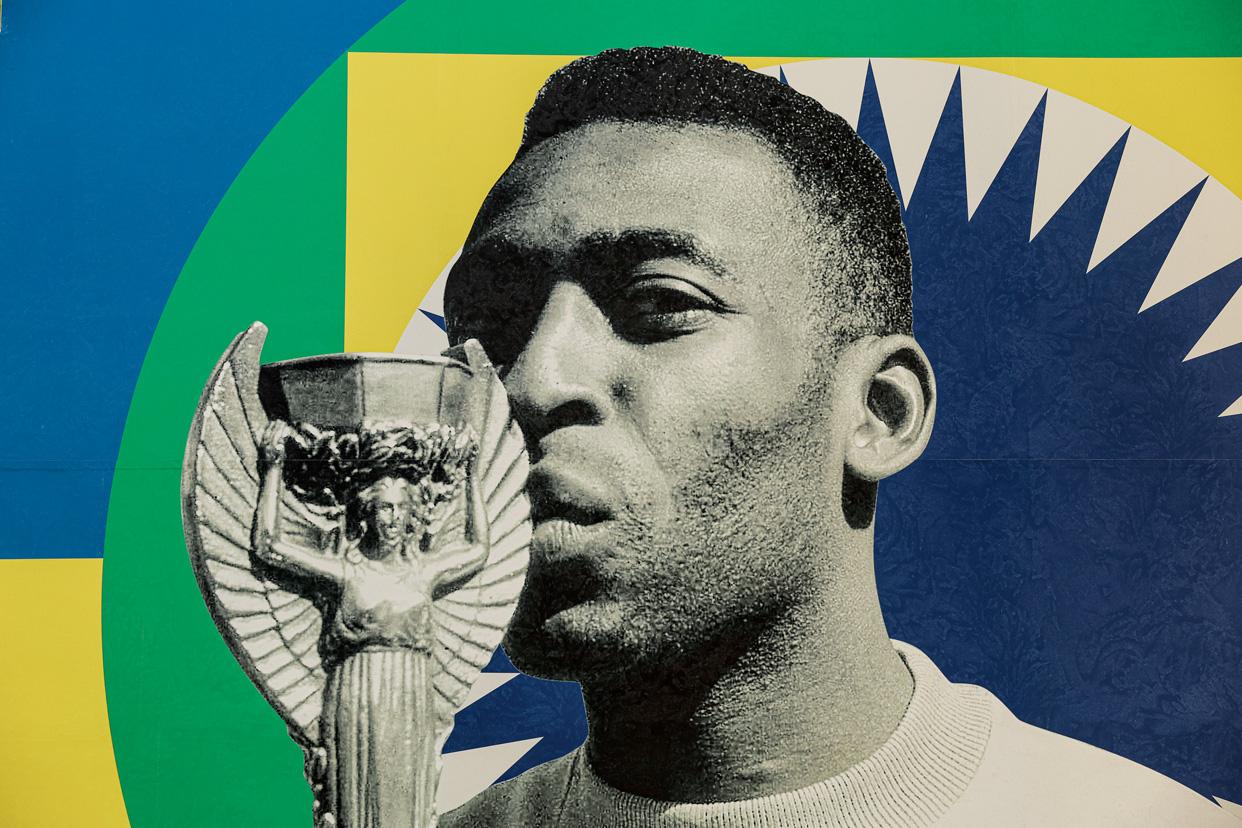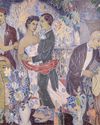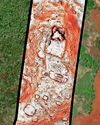
With the crowd still cheering this, the ball was lobbed back into the area and, insouciantly, Pelé flicked it with the side of his head into the goal. Within moments, Brazil had won their first World Cup, making the nation's identity, then better known for coffee, synonymous with football. Pelé, reduced to floods of tears on the pitch, began his life as the embodiment of Brazilian football.
It is worth recalling how much was riding on this moment for Brazil. The country's scintillating Afro-Brazilian stars, such as Leônidas, first caught the world's attention at the 1938 World Cup. Commentators at the time suggested that the country's hybrid Afro-IndianEuropean demography was the greatest strength behind its football and culture. The 1950 World Cup, held in Brazil, was meant to cement this notion, but the shock defeat to Uruguay in the final game - the Maracanazo - was read as a failure of the country's modernisation and its pathological miscegenation; the black players were made scapegoats for the defeat and racist stereotypes were reactivated. In 1958 the curse was lifted. Brazil's super-diverse squad had become champions playing in their own unique style; Pelé was the star, and the world took notice.
Bu hikaye The Guardian Weekly dergisinin January 06, 2023 sayısından alınmıştır.
Start your 7-day Magzter GOLD free trial to access thousands of curated premium stories, and 9,000+ magazines and newspapers.
Already a subscriber ? Giriş Yap
Bu hikaye The Guardian Weekly dergisinin January 06, 2023 sayısından alınmıştır.
Start your 7-day Magzter GOLD free trial to access thousands of curated premium stories, and 9,000+ magazines and newspapers.
Already a subscriber? Giriş Yap

Finn family murals
The optimism that runs through Finnish artist Tove Jansson's Moomin stories also appears in her public works, now on show in a Helsinki exhibition

I hoped Finland would be a progressive dream.I've had to think again Mike Watson
Oulu is five hours north from Helsinki by train and a good deal colder and darker each winter than the Finnish capital. From November to March its 220,000 residents are lucky to see daylight for a couple of hours a day and temperatures can reach the minus 30s. However, this is not the reason I sense a darkening of the Finnish dream that brought me here six years ago.

A surplus of billionaires is destabilising our democracies Zoe Williams
The concept of \"elite overproduction\" was developed by social scientist Peter Turchin around the turn of this century to describe something specific: too many rich people for not enough rich-person jobs.

'What will people think? I don't care any more'
At 90, Alan Bennett has written a sex-fuelled novella set in a home for the elderly. He talks about mourning Maggie Smith, turning down a knighthood and what he makes of the new UK prime minister

I see you
What happens when people with acute psychosis meet the voices in their heads? A new clinical trial reveals some surprising results

Rumbled How Ali ran rings around apartheid, 50 years ago
Fifty years ago, in a corner of white South Africa, Muhammad Ali already seemed a miracle-maker.

Trudeau faces 'iceberg revolt'as calls grow for PM to quit
Justin Trudeau, who promised “sunny ways” as he won an election on a wave of public fatigue with an incumbent Conservative government, is now facing his darkest and most uncertain political moment as he attempts to defy the odds to win a rare fourth term.

Lost Maya city revealed through laser mapping
After swapping machetes and binoculars for computer screens and laser mapping, a team of researchers have discovered a lost Maya city containing temple pyramids, enclosed plazas and a reservoir which had been hidden for centuries by the Mexican jungle.

'A civil war' Gangs step up assault on capital
Armed fighters advance into neighbourhoods at the heart of Port-au-Prince as authorities try to restore order

Reality bites in the Himalayan 'kingdom of happiness'
High emigration and youth unemployment levels belie the mountain nation's global reputation for cheeriness